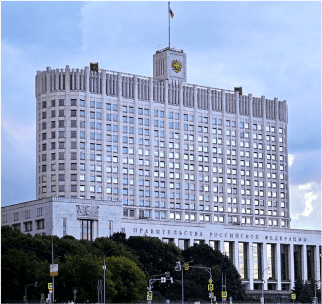Approximately, 1 or 2 of 20 PPP projects being designed obtain finance (construction phase starts). More than a half of above-mentioned projects are fundamentally untapped due to investment, budgetary, political or other reasons and are already abandoned at pre-project stage. We are interested in projects that had the right to exist, but were not implemented for various reasons.
Mistakes and responsible persons (risks holder)
What can we provide in this section? A simple list of mistakes, often unique for each project, can span hundred pages of text and is interested only to experts. Hereto, we will try to represent typical mistakes for projects in various industries (in relation to various objects), repeated in various federal and regional projects and, the most important, with defined responsible person (or persons) for the mistakes. As fact, the responsible persons in most cases are project participants - region (federal executive authority, municipality), investor (concessionaire), financing parties, development companies. Such a responsible person should by default manage a risk (of mistakes) and mitigate it. So, we have gone a little ahead with responsibility structuring, let’s get back to the mistakes.
Typical PPP and concession projects mistakes.
We emphasize once again that we are considering, in principle, projects being implemented, with adequate economic parameters, demanded by the public side and politically acceptable.

Grantor (federal executive bodies, regional executive bodies, municipalities) mistakes

Investor
(concessionaire) mistakes

Financing parties mistakes

Developers mistakes
Grantor (federal executive bodies, regional executive bodies, municipalities) mistakes

- 1.
Decision makers and working group formers do not know and do not understand the PPP basics.
Often interest in a project is confirmed politically at the start. After significant pre project works (of course, at investor expenses), a decision maker begins to realize that there are risks both for an investor and a public party and refuses to take the risks. There is a huge number of such projects.
Solution: form PPP competences, organize courses, hire advisors
- 2.
Appointment of several responsible persons at the earliest stage.
Such decision leads to approval proceedings delay at the beginning. If a project influences interests of responsible persons, they begin a sit-down strike.
Solution: appoint a project responsible acting as grantor a ministry (department, division, committee) which KPI performance is directly connected with project implementation.
- 3.
Appointment of a responsible project person with insufficient authorities.
Such appointment limits a project promotion through other departments, committees, ministries, etc., that have to approve a project, at least on workflow level.
Solution: appoint a project manager at least a regional (municipal) deputy head.
- 4.
A late including or not including representatives of regional or municipal economic and financial departments (or etc.).
At project beginning an economic department at least shall approve finance provision and a financial department shall approve a finance method (including by providing documents). Otherwise, it is likely to abandon project commercial close due to lack of finance.
Solution: you should include main signatories and their assistants in a work group.
- 5.
A public party project work group besides working on a project continues to work in profile ministries (divisions, committees and etc.).
As a result we face with delayed terms of project implementation, poor project development, poor public party (grantor) interests protection, high probability of claims form monitoring bodies.
Solution: you should form a separate profile team with relevant experience for concession and PPP projects.
- 6.
Absence of public approval of a project.
Confrontation of various interests, political groups, search for topics by tabloids provokes collapse of (even signed and implementing) projects. Leading market players suffered significant reputational losses due to underestimation of this component.
Solution: you should launch PR campaign prior to the first public project announcement.
Investor (concessionaire) mistakes

- 1.
An attempt to maximize his profit contrary to public party’s interests.
An investor, of course, is interested in increasing its profit. However, a typical investor’s mechanism of artificial increase of sums to be paid by a grantor doesn’t work in respect of long-term relations. Even if a project terms permit such increase, investor’s reputation will be damaged, as result, his opportunity to implement other projects may be shady.
Solution: plan your work not for a budget (elected) period, but for a long period of time; exclude your will to earn here and now.
- 2.
An investor’s attempt to use different instruments to postpone performance of his obligations.
Many leveraged investors often face with difficulties in attracting finance. In such cases, the investor tries to avoid performing his obligations prior to obtaining funds. Such an investor’s behavior creates various risks for a public partner and social risks for a project.
Solution: an investor should plan such postponements without regional costs increase. As an option, try to attract a competitive bank financing offers (negotiate with several banks) to accelerate loan financing access.
- 3.
An investor’s attempt to avoid ACW and costs control prior to construction works completion.
Budgetary funding is a rather delicate and responsible moment. Lack of public control of a concessionaire (under the 115-FZ and the 224-FZ) provokes prosecutor inspection of a public party and a concessionaire beyond a concession contract scope.
Solution: respect balance of interests; let a grantor legally justify project costs.
- 4.
An investor’s attempt to transform a procurement contract into a concession one.
Of course, many projects can be artificially structured with a concession. However, a competitive environment will inform antitrust bodies and relevant authorities on the artificiality. Unfortunately, it is quite common for low-level concession projects in housing and utilities and social sectors.
Solution: avoid participation in such projects.
- 5.
Equating a concession contract to a procurement one.
Once again, we note that a concession contract is not a simple shipment of a product (service provision) contract. Under a concession, an investor builds (reconstructs) and operates an object for more than one year. That instrument shows its advantages in a long term. Equating a concession contract to a procurement one generates strange financial models and concessions, with high risks of being null and void and filling claims by monitoring authorities.
Solution: you should make your mind on project participation if you understand the 115-FZ and the 224-FZ instruments.
- 6.
Use of the 115-FZ and the 224-FZ instruments for privating purposes.
There is nothing impossible for a qualified legal team. But if you implement a project through the 224-FZ instrument, only because an investor receives title to project facilities, pay attention to budget efficiency justification of a project during and\or after project implementation terms. An explicit comparison of procurement and PPP instrument isn’t in favor of the latter.
Solution: perhaps a concession project period for 49 years can solve the problem. When structuring such projects keep in mind life period of project facilities, risks, tax burden, etc.
Financing party mistakes

- 1.
An attempt to protect its interests for grantor’s expenses.
A financing party is interested in mitigating its risks as much as possible. However, a typical situation when a financing party acts together with an investor against a grantor is unproductive. Very often direct agreements contain suspicious and risky provisions for a grantor.
Solution: large banks should systematically analyze and actualize direct agreements drafts. Mid-level banks and banks entering to the PPP market should draft direct agreements on their own.
- 2.
An attempt to act together with an investor against a grantor.
Internal bank regulations and an executed direct agreement may open access to a credit line. However, such an unnecessary association with an investor interferes in arriving at a position between a bank and a public party when a concessionaire is replaced. All above mentioned impedes performance of a concession contract.
Solution: you should form a position on your own for each question in order to save balance of interests.
- 3.
An attempt to set a facility rate at least the key rate + 3-4% for every project.
Unfortunately, 10% rates haven’t survived this long. However, in a long-term perspective, downward trend seems to continue. Obviously, 10+3% facility rate looks adequate in 2019, 3+3% facility rate in 2025 looks less convincingly.
Solution: you should understand that Russian economics follows, with its own particularities, global market rules; abandon regional projects with 15+10% facility rates in order to implement adequate projects and bring down facility rates for long-terms projects.
Developer mistakes

- 1.
Lack of the PPP knowledge.
A company has entered the PPP market in order to find object for further construction or acts as master builder in PPP projects. As result, such developers leave the market.
Solution: developers should study PPP basics (including, but not limited to the PPP.RF); participates in projects as concessionaire (not a master builder).
- 2.
Search of ongoing projects in open sources.
Traditional project generators are regional, municipal investment development agencies websites. Often such websites contain projects that haven’t found an investor for more than one year and that are primarily imposed to a builder-concessionaire.
Solution: you should be aware of projects that haven’t attracted an investor for a long period of time. You should structure projects on your own.
- 3.
Participation in concession tenders.
A found tender is often somebody else’s long and expensive project. Your participation in the tender and even winning doesn’t guarantee execution of a concession contract, especially if you have applied to the tender in the last moment. Unlike to the 44-FZ winning tender is not a final stage of project structure.
Solution: you should work through your participation in tenders with federal, regional and municipal authorities in order to avoid time and money losses.
- 4.
Participation in PFIs withdrawal.
This topic is also not entirely correct. Anyway, such option is a developer’s cheap opportunity to compete at least for a construction contract, and, at most, for a project. The advantage of this model is absence of responsibility for an alternative PFI application. A builder usually negotiates with a PFI applicant. In case he doesn’t get legally binding documents, a PFI project is transferred into a tender.
Solution: in order to avoid money losses on further project implementation stages, you should structure your own projects.
- 5.
Reading PPP and concession market analytics.
We note that there is little of adequate analytics in the market.
Solution: you should find good analytics on your own, including in cooperation with regional executive bodies (not applicable to Moscow, Moscow region and Saint-Petersburg authorities).


